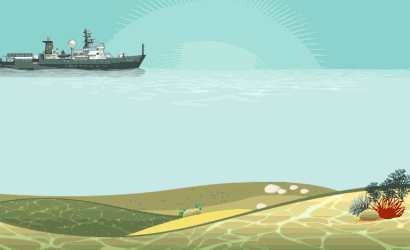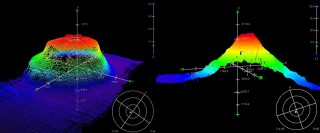
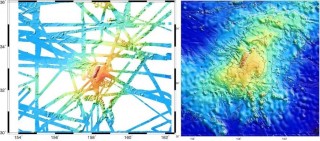
Our fifth track is complete, and we will keep mapping Tamu Massif to fill in as many information gaps as possible.
The bathymetric data is the second piece of the puzzle needed to gain insight on the formation of Tamu Massif. These data are significantly increasing the coverage of depth soundings allowing us to create a new topographic map of the volcano. This is especially important since only about 20 percent of the current maps were made with high-resolution depth soundings. The other 80 percent used satellite information to interpret the topography of the ocean floor.
A Quick Review
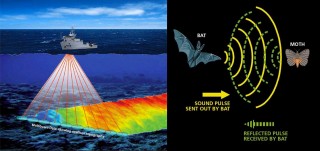
As mentioned in previous blogs, the multi-beam echo sounder send out a fan-shaped sound pulse and listens for a return from the seafloor. The system then calculates the time of return and angle to determine depth along the bottom; in turn, giving us a 3D detailed map of the seafloor shape. This technology works very similar to the way some species use echolocation. Bats or dolphins can detect and locate objects by emitting high-pitched sounds and determining the time for an echo to return and the direction from which it comes. We can see features on Tamu Massif using the echo sounders, as they help us to create high resolution maps. I am still amazed and excited at the fact that we are the first to see these images of the “World’s Largest Single Volcano”, and that we are able to share them while we are still mapping.
Update on “Champi”
Every expedition has a challenge to overcome and our expedition is no exception. As we turn into our sixth track, the thoughts of how Typhoon Champi may affect us, our data collection, or even the expedition as a whole is something that has crossed all of our minds. Rough seas can contribute to “bad” data since the multi-beam is attached to the hull near the bow of the ship. As the ship rolls and pitches, the angle and coverage of the multi-beam is affected and in turn, the data is as well.
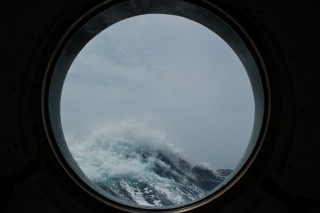
Weather is a natural part of being at sea, and the team already experienced a small storm during the first week. As chief scientist William Sager states, “it was just a little fall gale passing across the north Pacific with high winds and seas“. Of course, storm waves aren’t smooth, so the ship moved around considerably, but it certainly added to the adventure. The seas may pick up again in the next few days, and while data collection is the main objective of our expedition, safety will always be a priority. The R/V Falkor has a very professional and knowledgeable crew who are constantly assessing weather conditions along our course.
